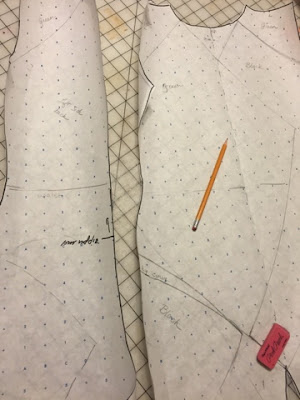As part of my craft-room cleanup, I've been wanting to get a cart to store many of the supplies I use on a regular basis so that I could:
- Keep my work area surface clear of all of those small things, like pencils, scissors, tailor's chalk, etc.
- Be able to roll out said supplies into the craft room whenever people come over instead of a mad-dash to tidy up my work space.
A lot of people have been using the IKEA Raskog cart with a lot of success. (Check out all of these ideas on
Google or
Pinterest.) I loved looking at all the photos of how people used them, and knew that something like this would be super useful for me.
Dimensions: 13.75 x 17.75 x 30.75 inches
However, after seeing one in-person at IKEA, I realized that it was a lot smaller than I had anticipated, especially for my type of costuming or other projects. If we had a smaller house/apartment, I might make due with this type of cart and have it be handy, bu my Viking said that I needed something sturdier with much more capacity, and I agreed -- my projects and supplies tend to be bigger than most hobbyists.
So, as when we were at Home Depot, we ran across this little beauty. It was more expensive than the Raskog, but it's rated to about 400 lbs of weight (not that I would use 400lbs worth of weight....)
They had a sample already built, but it was on a high shelf, but it looked like it would work for me.
The first order of business was to build the darn thing, which was fairly easy. It was pretty easy to assemble and all of the pieces were extremely sturdy. However, upon building it, I realized just how BIG this thing was, and I started having some doubts. (It comes up taller than my waist).
But, when I started filling it with my supplies, I slowly started to realize that it might not be too big after all.
I put some craft foam down as a liner so pieces wouldn't fall through the holes.
The top shelf contained my caddy with the little things I use on a regular basis -- different scissors or blades, pens/pencils, button hole rules, awls, seam rippers, tracing wheel, etc., etc., etc.
The second basket held all of my different pins (glass, silk, quilting), different fabric/paper weights, needles, and other items that I didn't want accidentally floating around. I keep these in a plastic container so that the cats don't play with them. And no one wants to accidentally step on a pin or needle.
On the bottom shelf, I put my fabric, pattern pieces, etc., that I need close by when I'm working on a costume, but that just need to be out of the way in the meantime. I also put my manual and parts for the serger in the bottom basket, which kept it handy, but also out of the way.
Previously, my workspace would be extermely crowded. All the necessary supplies would be on one corner of the table (as illustrated when I was working on my 10th Doctor pants) -- scissors, weights, pins, pattern, etc.,
Everything shoved to the top most of the table.
And the cats would be at the other end of the table.
A litter of books, paper, scissors, pattern pieces, fabric weights, etc.,
With the cart, I gained a TON of space on my workspace area (i.e. dining room table), which was
all sorts of awesome. Plus, I wasn't constantly moving the cat to see if he was laying on
ruler. It also gave me a place to place a drink with worrying I was
going to accidentally spill liquid over the fabric.
Cat space is very important, ya know.
Despite the cart is taller than my dining room table, but it definitely helps clear up the space quite nicely. It probably could be a tad bit smaller, but I'd rather it be a tad too large than too small to use effectively.
When I finished sewing for the evening, I discovered a nice bonus. The cart was sturdy enough to hold my serger on the top shelf. All my pattern and fabric pieces went into a basket.
By putting everything into the cart, the table was now clear for other things, like eating, or if my Viking needed the table for another reason, he'd have the space to use it without worrying about disturbing my projects. And I could move it to a better location where it would be out of the flow of foot traffic.
It would be self-contained in the cart until I was ready to start sewing again. And, if visitors came by, I could wheel this whole thing into the dedicated craft / storage area without a frantic clean-up of a project. Or if we set up a separate work station, I can just wheel all my stuff over to the new table without any fuss.
As I use the cart more, I might move things around to make it more
efficient for me to use. (For example, I might move the tool caddy to
the second cart so I can reach it easier, and put the patterns on the
top shelf. ) But for right now, this particular cart is extremely useful and I'm very happy with it.





































